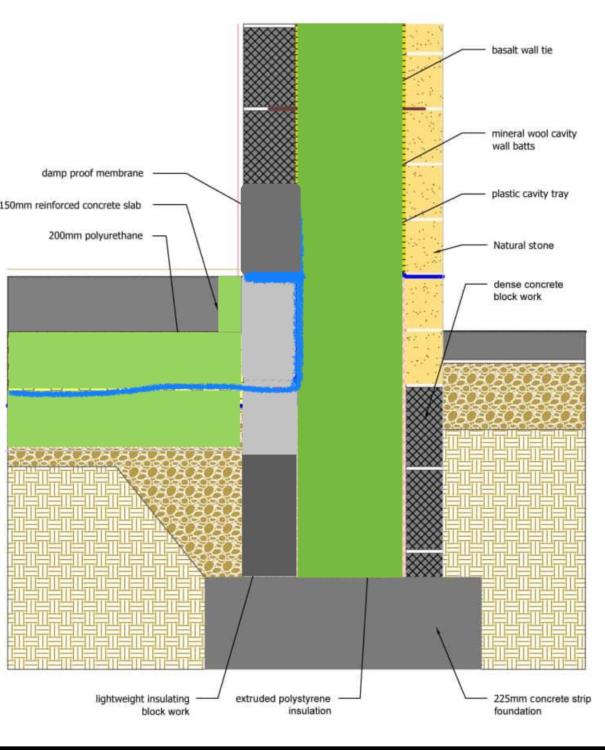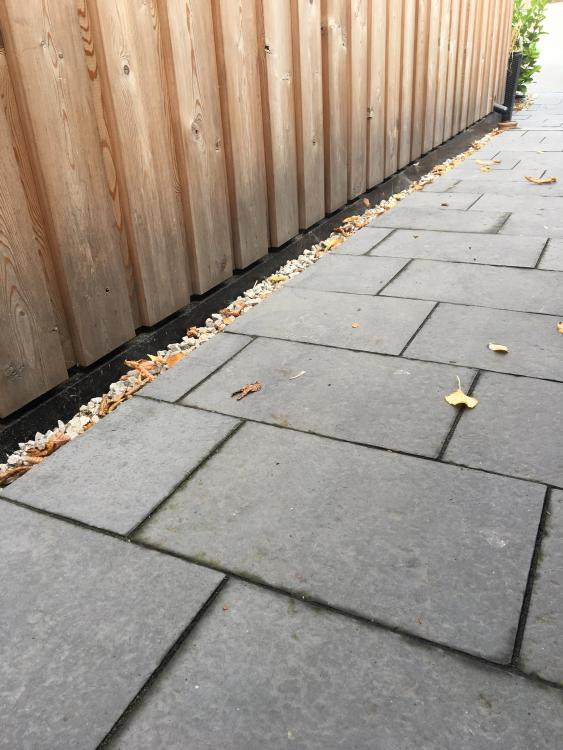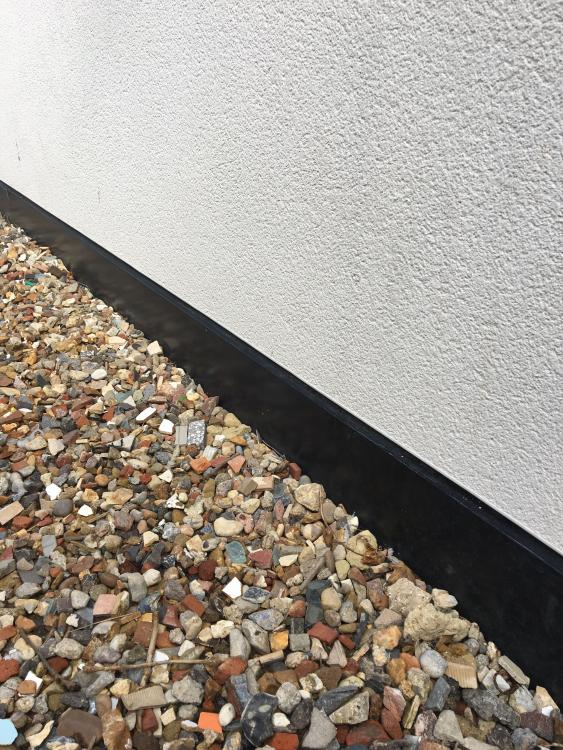Leaderboard
Popular Content
Showing content with the highest reputation on 03/20/24 in all areas
-
Depends where you are and your climate (you price in € as the only clue to your location) Under floor heating from an Air Source Heat Pump will be the cheapest "electric" heating. Roughly 1/3 the cost of direct electric heating. And it can heat your hot water as well.3 points
-
I'm in much the same situation regarding scrappage. The jerrycans are currently sat under a workbench in the garage but I can't see me using them again so they need to go. I guess the practical thing to do is to cut them up and separate the waste for recycling. Sunamp confirmed the use of food grade Sodium Acetate Trihydrate and its recyclability a couple of years ago (also its use in salt and vinegar crisps) so no issues there. I would consider whether you can make use of the vacuum insulation panels before you discard them. They are relatively expensive and hard to come by. I have reused the steel case and the vacuum insulation panels to insulate my new LFP battery system. The rest is mainly e-waste and can be recycled.2 points
-
The planners don't want appeals. They take lots of resources. If you start off by asking if you can discuss it, you will determine their attitude. Planning is objective but you may have different interpretations so it can be discussed. A further step can be to engage a planning consultant to present your argument. That way the council sees what you would say at appeal and may be convinced or prepared to compromise.2 points
-
I used to work in the health and leisure industry. I cannot remember ever having to heat a pool room. Cool them yes, heat no. How are you going to deal with ventilation? And remember that all metallic fittings and fasteners need to be the correct grade of stainless steel, or other rust proof material.2 points
-
sister up with 3x2 so you have a good fixing both into the old joist and for the new flooring. start from highest point and level to that everywhere with a laser.2 points
-
Good question to ask. My own view is that it is healthy for your builders to query the design and I can see why they / et al ask as using a column (UC) section as opposed to deeper and narrower universal beam section (UB) immmediatly flags up.. why is the SE doing this? It is a long span and other posters are making suggestions as to alternatives. But I'll go with your SE and that makes me think.. why the UC or not say Glulam etc. I suspect that at the top of your stairs you need 2.0 m head clearance and the SE has struggled to get the structure to fit within the Achitectect's envelope that is available for structural members while maintaining BC compliance. Thus to make the structure work within the given envelope the SE has had to use a UC section that is inherantly less efficient for this application in terms of steel weight and assocaited conection cost. You'll see on the drawing you posted that there is a splice in the beam stated at 1/3 point. At 1/3 points there is often still a fair bit of bending force in the beam and that can add to the connection fabrication cost. I try and go for 1/4 in for the end splice as the bending forces are less and can simplify the bulkiness / cost of the connection. Now I mentioned the connection cost. If the connection requires a full strength weld (full pen butt weld) then some smaller fabricators need to get an inspector in to check the full pen weld .. this can add £300- 500 quid to the cost of the steel on a bad day! Or you can go to a larger fabricator who may get the inspector in at a lower rate or have in house staff who can do it.. but you pay for that in house service.. So you need to ask the question can we go for a 1/4 splice (with simple fillet welds) and also ask the Contactor if they can lift a 3/4 length beam instead of a 2/3 length beam. If so what is the steel price now? Sometimes DIY / BH folk get a steel price and wonder what the difference is.. it can be just down to a connection and the way it is specified / welded up on a small domestic project!2 points
-
Having now lived several years in a near passive house with it's low heating bills and constant comfortable internal temperature, my view of old houses like this has changed considerably. To properly upgrade it will cost a LOT of money. You either upgrade it, or pour lots of money into it every year in heating. I firmly believe that the market value of old inefficient properties like this should be much lower than a well performing house, to reflect either the high heating bills or the work needed to upgrade it. I am not saying don't buy it, but buy it with your eyes open, and I hope you are not the one owning it when the market finally wakes up and people realise poor performing houses really are worth less.2 points
-
1 point
-
You could put in a thermal store and avoid the whole thing.1 point
-
My BCO would not budge and had to rent a calibrated unit from Sun Rentals. The BCO then accepted my own report but this was an unusual case compared to most on the forum.1 point
-
You would possibly have to pay another plumber to inspect and certify another's work - good luck with that. Or get building control to sign it off - at the plumbers expense But bottom line is the plumber should know better and not be installing, or should have lined another or building control up to certify. I suspect there are lots of un-certified cylinders in the UK.1 point
-
If your thinking of using thermalite blocks, for both inner and outer you need to have a serious re think. or are you thinking of the single block that does solid wall construction did this in the 90’s lots of problems with the blocks crumbling. not for me.1 point
-
That has been a chip on my shoulder for some time. In the "old" days people were happy to use blue (a phase colour) as neutral so why so against black now? Of course my gripe is why is only brown / black / grey available? * particularly when talking of 3 core and earth flat cable, Name me one case where you will actually use 3 core & earth as a 3 phase cable? Brown / Blue / grey would seem a better choice. * Yes I know we are talking about SWA here, where 3 phase e.g to feed a motor is a real possiblility, and where you CAN buy 3 core in brown / blue / green-yellow1 point
-
In my experience they decide in a professional manner according to their interpretation of policy. However their experience is that often the appeal officer will disagree, and reverse it, hence they may tell you that. I've had a refusal overturned at appeal on the grounds of 'what else will happen to this brownfield site?.' That was, therefore, not based on policy in any way and our own consultant was surprised to succeed. The appeals people in Bristol used to be the top of the profession. Now I fear it is delegated to the lowest bidding consultant who then likes a quick fix. I further fear that they are influenced hy central government to encourage development...but I have no proof. But I have been involved in a couple of cases where council refused permission to fit with local opinion and parking problems but it was permitted at appeal. Hence my cynical opinion.1 point
-
I was chatting to a Polish bricklayer There a bit like rocking horse poo now that there wages have caught up He reckons that it’s virtually all thin bed over there1 point
-
>>> Just bear in mind that the median time for determination of an appeal (written) at the moment is something like 37 weeks (may be different for different appeal types), and that's from the date they determine it is valid. My appeal took 12 weeks to get to that point, so it could be almost a year before I know the outcome. I also saw 12 weeks to 'validation' - which is how they fudge the stats I suppose. This site is suggesting 30 weeks on average from then, for a total of 42 weeks: https://appealfinder.co.uk/Planning-appeal-success-rates-and-timescales.n48.html1 point
-
We have a continuous air gap at the bottom and top with insect/rodent mesh also at the bottom and top. Ours is board on board which naturally creates a big gap behind the cladding anyway. One issue we do have is at the window head where we don’t have any mesh. My plan is to use thicker stainless steel mesh bent to fit and pushed up into the gaps.1 point
-
1 point
-
Even so a gate opener is easy I.e relay , power , button . Or ( of course ) integrate a similar thing into home assistant - for 60 quid a year can have easy remote access and Alexa support I.e Alexa open gate . Assuming @Russell griffiths wants as ‘simple’ a solution as possible though .1 point
-
In my case I don’t plan on having a gate opener. I might eventually of course. I was just going to use an Reolink doorbell. Like you I have a duct that runs out to that side of the house to power this.1 point
-
Well your enclosure, as you say falls into Class 6 of Schedule 2 to the Building Regulations and so is exempt. It also would not have been subject to the Energy Efficiency Requirements because Regulation 21 (which applies those requirements) gives exemptions to those requirements to several types of buildings included, as you point out, under sub-para 3(d) "stand alone buildings other than dwellings with a total useful floor area of less than 50m2". Since you have a pool inside, the provisions of G1 and G3 (2) and (3) may well affect you (cold and hot water supplies) however, (Regulation 9 (2) (b)).1 point
-
I've built over big swimming pools. But always avoided building the pool itself because they go badly wrong so often. But then so do buildings, as you may have noted when they are closed for extensive repair. Condensation is the big problem. So even for an unheated space you need to either let the wind whistle through or have extensive insulation. Also ensure that any joints in metal cladding are sealed on the underside, where the lap will be the wrong way. Heating is usually only under windows to stop condensation.1 point
-
You really need to complete a heat loss calculations, we have 0.14 walls, 0.09 floor and between 0.11 and 0.14 roof, and pretty airtight - we defiantly need heating in NE Scotland. Your form factor makes a huge difference to heat load, ours is rubbish (long thin building and all vaulted ceilings), but suits the location and views. No matter what you decide, put UFH pipes in all down stairs rooms. We put ours in a 300mm centres - very small cost and nothing lost. You could connect to a heat pump or heat on a cheap rate via a Willis heater or two.1 point
-
Learning from each others mistakes. Beware the door. We bought one that opens only one way and isn't reversible. Grrrr. And some require extra width for the door to open to 90°.1 point
-
Having taken my planning decision to appeal (and won) I found the process relatively painless and frankly easier than applying for planning. I have found the appeal officers more “practical” than planners and their office staff helpfull. So go for it.1 point
-
Our timber frame worked out at 0.095 U value and we heated the house with just three electric towel rails and warm air from a 685W EASP. We kept the whole house at 23C.1 point
-
1 point
-
Overheating is often a bigger problem than heating such a house. What’s the rest of the design like? (Lots of glass etc)1 point
-
Yes, it would mean you had wasted money on the Intello *if* you believe that several sheets of foil-backed plasterboard constitute an unbroken VCL. Since I don't believe it would anyway, stick with the Intello only.1 point
-
Check the manual if you know which one you are going for. Our integrated fridge cabinet has a large void above and beneath it built into the cabinet and the cabinets have a full height void running the length of the cabinets. The cabinets are framed into the alcove. This is a pretty standard feature in kitchen design nowadays. I contemplated putting a grill in the plinth under the fridge when I fitted it but didn’t but did leave a gap at the top of the plinth that runs the full length of the cabinets. Our separate under the counter freezer has a requirement for a ridiculous amount of space around it and behind it so much so you couldn’t really practically fit it under a counter. The manual states that not having this amount of space won’t affect the operation of the freezer it just might use more energy.1 point
-
Why not sister but with ply, 18mm ply ripped to 100mm strip, fitted to the side would significantly strengthen the original level these all up and it would give a nice flat top to then cut a full length shim/ packer to glue onto the top. some might only be 5-6mm so a table saw would be needed. mad idea 🤷🏻♂️🤷🏻♂️1 point
-
Can’t you get this size beam in one piece if you are lifting it mechanically? I got a 10m length of 203x102.1 point
-
I calculated this. From memory all you need to do is widen the cavity by about 5mm to make up the difference. SS every time. Here's my alternate version of the above detail. 1. Full fill of EPS beads, right to the foundation. Allowance for mortar droppings so they won't build up to DPM level. 2. Less thermal blocks, they don't really make a difference to the heat loss below the insulation in the floor. 3. 2 x Layers of EPS 150mm insulation with the DPM in between for protection. 4. Separate DPC on outer leaf. 5. 50mm insulation at perimeter really helps the heat loss. 6. Much easier to level this concrete floor than the other design. 7. Allows for the use of cavity ties below the DPC increasing stability. 8. Simpler threshold detail for DPM.1 point
-
If counter-battening would make the floor too high I have another suggestion. Buy some 3.6mm plywood and rip it into say 300x50mm sections. Use a laser level or string line and tack or staple the ply in place to get it close enough to level. When the floor is finished use some self levelling compound to take any last imperfections out if needed.1 point
-
1 point
-
1 point
-
Anybody else know about this stuff i thought all you nerdy types @Pocster would have some points to share. c,mon I’m a Luddite and need help.1 point
-
Have a look at spider cranes. I just paid £350 for half a days lifting a 11m ridge beam, 2 posts to sit it on and a ground floor steel. 5 pieces in total. Don’t mess around trying to do it by hand, your brickies are far slower, so will work out way more expensive and more risky.1 point
-
Regarding splice cost. I haven’t a clue about current costs, but basically they charge by the hole, so a plate with 6 holes in both sides would be 12 holes @ £10 a hole ( just a guess) plus the two or 4 steel plates. Regarding lifting it in one piece your beam is 854kg in two it’s 427 kg. in three it’s 284kg. so cutting it in 3 it’s still over a quarter of a tonne. if I was on a budget and doing it myself I would lift them up through the first floor and then get them up to the final point. however if you are paying a builder and his two lads to do this the time you have payed out £450-600 for a day of messing about you could have paid to have it lifted up mechanically and been finished by 11am. it’s all a bit of save a quid in one hand and pay it out in another. if I was doing this I would look for a local company with either a large hijab lorry or a mobile tracked crane.1 point
-
@Lesley72, can you feel any bounce in the floor? If not I would suggest the bounce is minimal and may even be within limits as @saveasteading posted earlier. I also think 4ft tiles on a wooden floor is pushing your luck. Best of luck removing the tiles, let us know how you get on 👍1 point
-
If you read any advice on DNO pricing it’s always the same, challenge the first quote. It ought to be fair and transparent pricing given it’s a necessary utility that you can’t simply buy on the open market but it’s not. You’ve got a substantial discount on the first quote and they’ll still have a substantial margin in that price.1 point
-
M2 rate is fine. You can pay interims as others have mentioned above but be careful he doesn't 'cream' the job. i.e. build all the long straight walls first leaving the fiddly bits behind and then leaves the less profitable items and does a runner. This could force you into paying day rate for the rest of the work. I am quite happy to take an interim and have a remeasure at say joist and wall plate then hold some back at wall plate to cover the extra work in gables and chimneys if you have them.1 point
-
@kelvin is correct. The construction courts / courts recognise that some Clients are experienced, some are domestic (inexperienced) and thus are afforded more protection under the law. Often domestic Clients get into dispute with dodgy builders who have written their own contract. While it can be difficult to argue against the terms of payment it is much easier to hit these builders in their weak spot which can be poor quality work that compromises structural safety. That could be anything from cavity width to incorrect insulation that could cause condensation that could compromise a structural frame. There are lots of ways to tie back bad work to safety considerations.. it's often knowing how you do that and present an argued and reasoned case. I do this with say the NHBC and other warranty providers etc who can be a bit.. (insert your own words) at times to speak. You can often debate to the ends of the earth about the quality of the finish.. but hit them on a structural issues and you often have the upper hand.. you make them rack up defense / consultancy costs and force them to employ their own Consultants.. who often won't touch them with a barge pole.1 point
-
What surprises me is how expensive these trims are, £21.50 per 2.4m length. Adding up to £723 for what I need!1 point
-
This is what we have done. But we didn't just use an L shape, we added a further up stand as per the last picture. The idea of this was to ensure that any water dripping down the wood ended up away from the frame. As we didn't have the twin wall we had the issue that the frames didn't over hang the EPS so we would have had to have thick battens to ensure we were clear of the EPS, using the profile saved us some making it really thick.1 point
-
May I ask how much you're paying for the aluminium? I need to sort out something asap and was going to use uPVC, partly as it's easier to trim if needed, but we have a fait bit of Al on the house so it might be better to finish the job with it too1 point
-
Just to say, that's strategy is smart, but it doesn't work if your LPA charges sizeable CIL as your later application then breaks the self-build exemption - v. handy for the LPA.0 points
-
I've already started writing my "Refusal Mitigation" document 😎 As I'm re-reading it again, I can't help but wonder at why my garden shed and its double doors was brought into it, as though that should impact the outbuilding size - I can't park any cars in the shed and the lawn tractor takes up 75% of the length with its trailer. Then there's the lawn spreader, log splitter, it goes on. Time I just bought a bungalow somewhere. 😅0 points
-
0 points
-
0 points







.thumb.jpg.e1125f09bd8f84045ac3b55732558c36.jpg)










